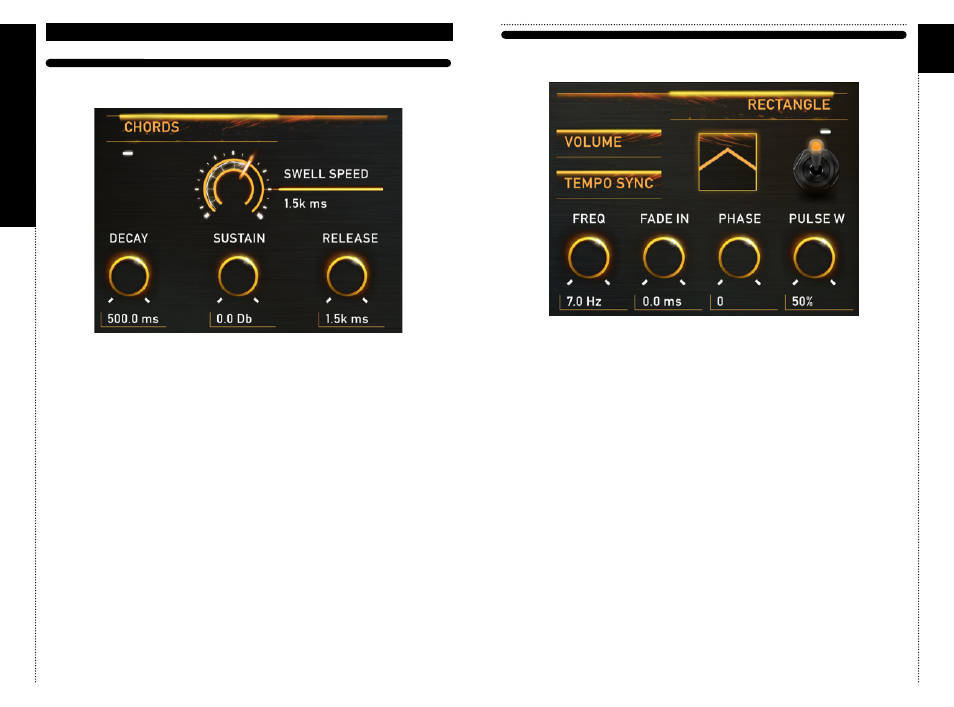Vir2 Instruments Apollo Manual User Manual
Page 13

APOLL
O
19
CHAPTER 05
/ S
WELLS
ADSR
Swelling sound with a guitar requires the plucking or strum of a note or
chord with the volume down, then raising the volume slowly after, creating
a swell of volume. The raising of volume is typically done with a volume
pedal, so in order to recreate the swell effect, Vir2 utilized the attack of the
ADSR to give the user full control of the swell speed. The attack knob was
renamed “Swell Speed”. When the Swell Speed knob is at 0.0 ms, the user
can hear the strum or pluck of a note. Turn this knob clockwise to achieve
desired swell speed. The Decay, Sustain, and Release knobs serve their
standard functions in an ADSR.
CHAPTER 05 CONT’D
20
LFO
Each Swells patch includes an LFO for further modulation and sound
design. To turn on the LFO, simply click the switch on the right-hand side of
the LFO edit area.
To select your desired sound wave, click the text button [shown as
‘Rectangle’ above] and a drop down menu will appear, giving you the
option to choose from either a Rectangle, Sine, Sawtooth, or Triangle wave
• Clicking the
VOLUME / PAN button will switch the LFO’s modulation to
control either volume or pan.
•
TEMPO SYNC syncs the frequency of the modulation with the host tempo
of Kontakt or DAW.
•
FREQ affects the frequency of the modulation. When in TEMPO SYNC
mode (yellow), the FREQ knob automatically adjusts to the frequency
which matches the host tempo of Kontakt or your DAW. When not in
TEMPO SYNC mode (blue), the user can freely turn the FREQ knob to
achieve desired modulation.
•
FADE IN affects the fade in of the modulating wave
•
PHASE affects the phase of the modulating wave
•
PULSE W affects the pulse width of the modulating wave, most notably
heard when a rectangle wave is selected
